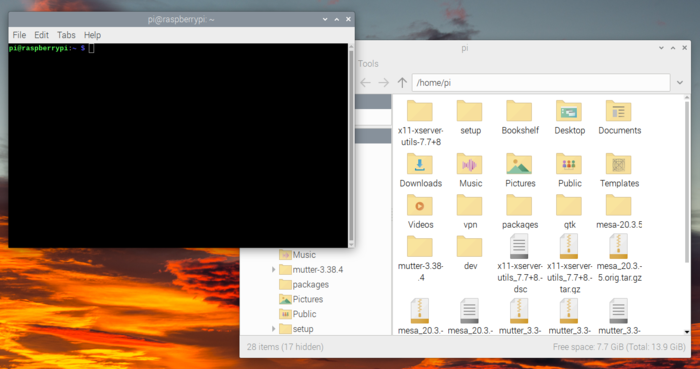Raspberry PI project developers Published Autumn Update distribution Raspberry PI OS (Raspbian) based on the Debian batch database. For download, three assemblies are prepared – abbreviated ( 463 MB ) for server systems, with desktop ( 1.1 GB ) and Complete with an additional set of applications (3 GB). The distribution is supplied with the PIXEL user environment (branch from LXDE). To install from repository about 35 thousand packages are available.
In the new release:
- transition to the Debian 11 BullSeye base (previously used Debian 10).
- All components of the Pixel desktop and the proposed applications are translated into the use of the GTK3 library instead of GTK2. As a reason for migration, the desire to get rid of the intersection in the distribution of different versions of GTK – in Debian 11, the GTK3 is actively used, but the Pixel desktop was based on GTK2. Until now, the migration of the desktop on GTK3 was constrained by the fact that many things, especially related to the adjustment of the appearance of the widgets, was much easier
Implement on GTK2, and in GTK3 some useful features used in Pixel have been removed. The transition demanded introduction of replacements for old GTK2 capabilities and a little reflected in the appearance of the widgets, but the developers took care that the interface would save the usual view.*img src=”https://www.opennet.ru/opennews/pics_base/0_1636439150.png” title = “” border = “0”> - The default composite window manager Mutter is involved. Earlier, the ragged angles of pop-up tips were processed by GTK2, but in GTK3, such operations were delegated to a composite manager.
Compared to the previously used OpenBox window manager, Mutter provides pre-formation of the image of the contents of the screen in memory (computing), before actually output to the screen, which allows you to implement additional visual effects, such as rounding the wind corners, shadows on the window border and opening / closing animation windows. Migration on Mutter and GTK3 also allows you to get rid of binding to the X11 protocol and in the future to provide support for working on top of Wayland.
The reverse side of the transition to Mutter has increased memory consumption. It is noted that Raspberry PI boards with 2 GB of RAM for work is enough, but the smaller memory volume is not enough for a graphic environment. For boards with 1 GB of RAM, a spare mode returns OpenBox, in which the possibilities of interface design (for example, rectangular pop-up tips instead of rounded and no visual effects are shown).
